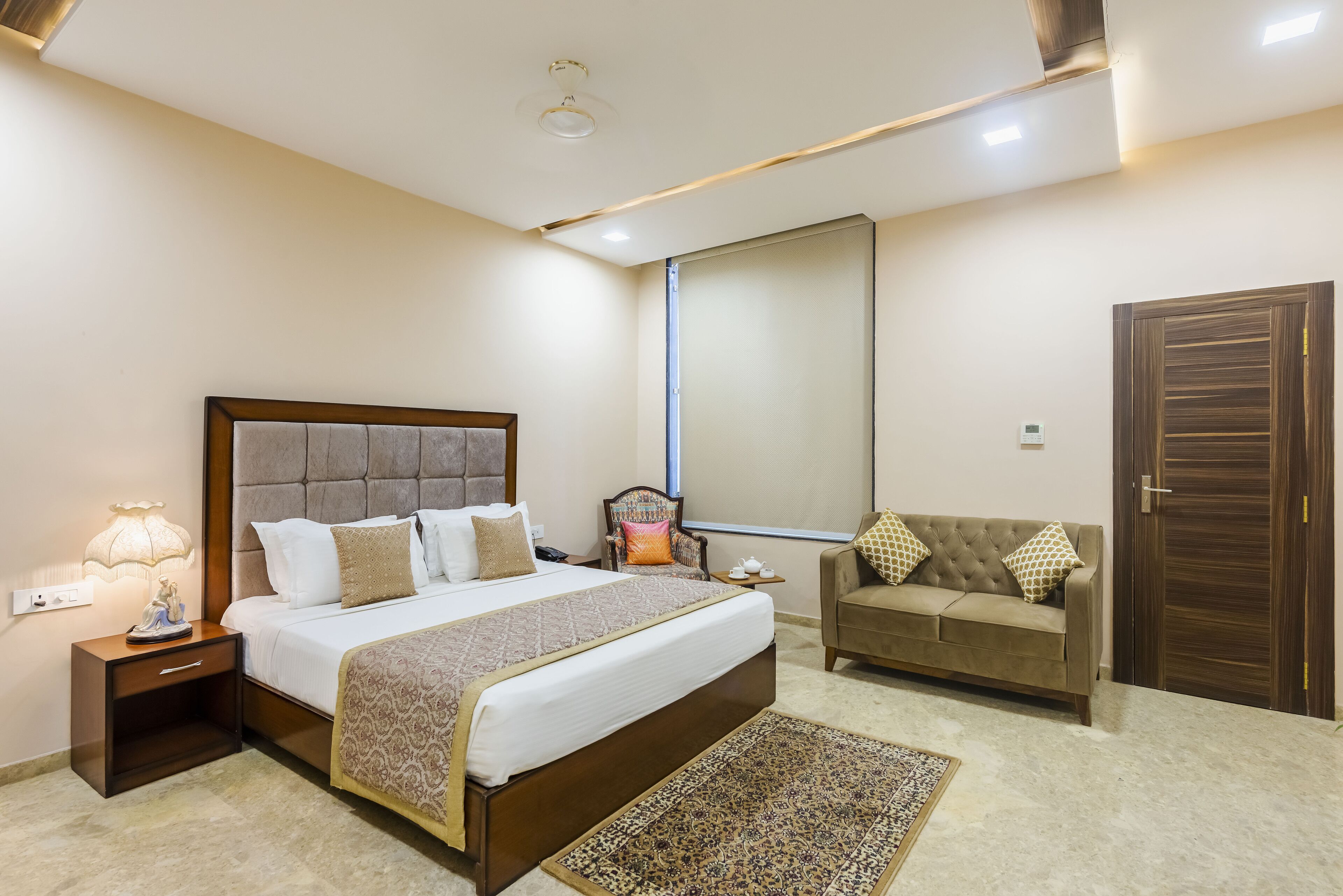A complex of small and big palaces, museums and gardens encompassing a rich blend of Rajasthani, Mughal, Medieval, European and Chinese architecture. One of the most beautiful palatial structures in Rajasthan. Originally built by Maharana Uday Singh II, it rises 30 meters above Lake Pichola and extends up to 244 meters. The palace complex has been built entirely in granite and marble. The interior with its balconies, towers and cupolas exhibits delicate mirror work, marble work, murals, wall paintings, silver work, inlay work and colored glass mosaics. The complex provides a fine view of the lake and the city from its upper terraces.
Amar Vilas The uppermost court inside the complex is a raised garden providing entry to the Badi Mahal, a pleasure pavilion built in the Mughal style. Its cusped arcades enclose a square marble pool. Amar Vilas is the highest point of the City palace and has wonderful hanging gardens with fountains, towers and terraces.
Badi Mahal Also known as Garden Palace is the exotic central garden palace situated on a 27m (89 ft) high natural rock formation vis-a-vis the rest of the palace. The rooms on the ground floor appear to be at the level of the fourth floor in view of the height difference to its surrounding buildings.
Durbar Hall Built in 1909 within the Fatepraksh Palace (now a heritage hotel), the hall was used by the royal ladies to observe the court proceedings. This hall has luxuriant interior with some unusually large chandeliers. Weapons of the maharanas and also some of their unique portraits are also displayed here.
Fatehprakash Palace Now run as luxury hotel and inaccessible to public viewing has a crystal gallery that consists of crystal chairs, dressing tables, sofas, tables, chairs and beds, crockery, table fountains which were never used. There is also a unique jewel-studded carpet here.
Krishna Vilas Another chamber in Fatehprakash Palance with a rich collection of miniature paintings that portray royal processions, festivals and games of the Maharanas. However, there is a tragic story linked to this wing of the City Palace. In the nineteenth century, a royal princess was unable to choose from two suitors seeking her hand in marriage, one from the royal family of Jaipur and another from Jodhpur. In a state of dilemma, she poisoned herself to death.
Manak Mahal Approach from the Manak Chowk, the palace has a raised alcove inlaid completely in mirrored glass. One of the prominent emblems of the sun is depicted on the façade of the Manak Chowk, which can also be seen from the outermost court.
Mor Chowk or Peacock Square A pillared hall with glass and mirror mosaic decorations is integral to the inner courts of the palace. The elaborate design of this chamber consists of three peacocks (representing the three seasons of summer, winter and monsoon) modeled in high relief and faced with coloured glass mosaic, built into successive niches in the wall area or jharoka. These were built during Maharana Sajjan Singh’s reign, 200 years after the palace was established. The peacocks have been crafted with 5,000 pieces of glass which shine in green, gold and blue. In an adjoining chamber, called the Kanch-ki-Burj, a mosaic of mirrors adorns the walls. The Badi Charur Chowk within this chowk is a smaller court for private use. Its screen wall has painted and inlaid compositions depicting European men and Indian women.
Zenana Mahal or Women's Palace Proceeding further from Mor Chowk, in the Zenana Mahal or women’s quarters (now converted into a museum) are exquisitely designed alcoves, balconies, coloured windows, tiled walls and floors.
Rang BhawanThe palace that used to contain royal treasure. There are temples of Lord Krishna, Meerabai and Shiva located here.
Sheesh Mahal The palace of mirrors and glasses was built in 1716. A shrine of Dhuni Mata is also located in the complex. This location is considered as the oldest part of the Palace, where a sage spent his entire life meditating.



